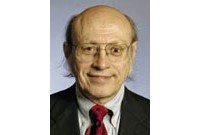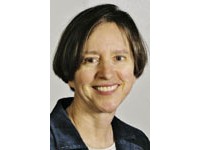Advertisement
Grab your lab coat. Let's get started
Welcome!
Welcome!
Create an account below to get 6 C&EN articles per month, receive newsletters and more - all free.
It seems this is your first time logging in online. Please enter the following information to continue.
As an ACS member you automatically get access to this site. All we need is few more details to create your reading experience.
Not you? Sign in with a different account.
Not you? Sign in with a different account.
ERROR 1
ERROR 1
ERROR 2
ERROR 2
ERROR 2
ERROR 2
ERROR 2
Password and Confirm password must match.
If you have an ACS member number, please enter it here so we can link this account to your membership. (optional)
ERROR 2
ACS values your privacy. By submitting your information, you are gaining access to C&EN and subscribing to our weekly newsletter. We use the information you provide to make your reading experience better, and we will never sell your data to third party members.
Environment
ACS Award in Colloid & Surface Chemistry
Recipients are honored for contributions of major significance to chemistry
by Rachel Petkewich
January 7, 2008
| A version of this story appeared in
Volume 86, Issue 1
Sponsored by Procter & Gamble
Lee R. White wanted to be a theoretical physicist. But while he was finishing his doctoral degree, an applied math professor talked him into examining the forces between particles in solution.
Colleagues cite numerous examples of White's pioneering contributions to colloid and surface science, but highlight his work in colloidal electrokinetics and the calculation and measurement of surface forces.
White and coworkers established a standard model for colloidal electrokinetics. That is, what happens to particle suspensions in electric fields. The particles' charge properties dictate the behavior of the colloidal system in all sorts of situations, such as whether the particles will clump together or stay as individual particles, White explains. The researchers created a computer program that converts experimental measurements to particle charges, and it is still widely used by researchers around the world.
White continues to work on basic research and industrial applications of electrokinetic theory. For example, he is currently studying how particles behave in nonaqueous solutions such as oils found in engines and electronic displays.
He is also well-known for developing quantitative theory in an area called compressional rheology, which includes separating suspensions from supporting fluids. He has been examining ways to measure the properties of suspensions and predict how solid-liquid separation processes, such as filtering or centrifuging a drug out of suspension, could be modeled and optimized on a plant-size scale.
In the past few years, White has applied this theory to exploring the factors that control cracking of surfaces coated with colloidal suspensions, such as photographic paper. These coatings need to be thick, but they tend to crack during drying, he says. Instead several thin coats are required at added expense. "Working out how to stop thicker films from cracking as they dry would allow for making inexpensive coated products," including solar panels, he says.
White's contributions "have truly changed how colloid science is carried out and how we understand the world around us," says Charles F. Zukoski, vice chancellor for research at the University of Illinois, Urbana-Champaign.
"Even though I am senior to White, I consider him a mentor," says John L. Anderson, president of the Illinois Institute of Technology.
White, 59, was born and educated in Australia. From the University of Queensland, Brisbane, he received a B.Sc. (1968) and two honors degrees (physical chemistry, 1969; theoretical physics, 1971). In 1975, he completed a Ph.D. in applied math at Australian National University. He did two postdoctoral fellowships in chemistry between 1975 and 1977 at the University of Bristol, in England, and the University of Melbourne, in Australia. Before doing a third postdoc in applied math at Australian National University, he lectured in physical chemistry for a year in Melbourne.
In 1981, he returned to Melbourne where he served as a lecturer in physical chemistry for three years. He then spent the next 14 years there as a professor of math. In 1998, he joined the chemical engineering faculty at Carnegie Mellon University, where he is currently a chemical engineering professor and director of the university's Center for Complex Fluids Engineering.
White will present the award address before the Division of Colloid & Surface Chemistry.





Join the conversation
Contact the reporter
Submit a Letter to the Editor for publication
Engage with us on Twitter